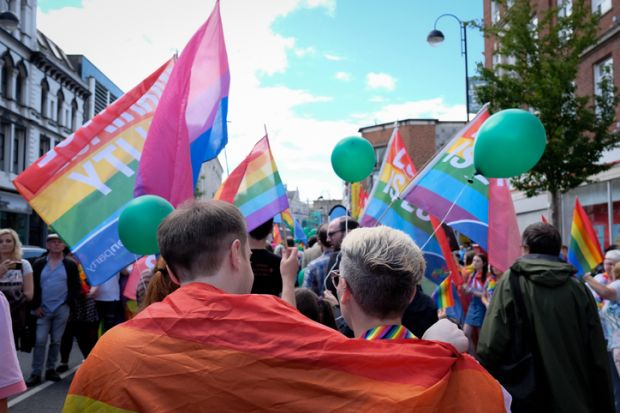UK academics outside the sciences are more than twice as likely to describe themselves as lesbian, gay or bisexual compared with the general population, according to new research.
The study, which compares census data to sector records collected by the Higher Education Statistics Agency, suggests that fears of LGBT+ under-representation within British universities may be “unfounded” – and, on this basis, its authors warn that “affirmative action” schemes designed to increase the recruitment of students and staff from these groups “may be unlawful”.
In a preprint posted on the Social Science Research Network, John Armstrong, reader in financial mathematics at King’s College London, and Alice Sullivan, professor of sociology at UCL, note that 3.4 per cent of the adult population in England and Wales described themselves as LGB+ in the 2021 census, rising to 4.4 per cent among those with Level 4 qualifications or higher.
This compares with 8.2 per cent of all UK university staff in the Hesa record, and 8.4 per cent among academics only.
The proportion of LGB+ people among academics working in science, technology, engineering and mathematics (STEM) is closer to the broader population, at 6.9 per cent, but among non-STEM academics the figure is 10.5 per cent.
Hesa data indicates that 7.8 per cent of senior managers in higher education describe themselves as LGB+, as do 6.5 per cent of professors.
Among students, 11.8 per cent describe themselves as LGB+, compared with 9.4 per cent of the 16-24 population holding A levels or equivalent qualifications.
Dr Armstrong and Professor Sullivan write that the data indicates that “fears of LGBT+ under-representation are unfounded”; in fact, they describe representation among staff as being “surprisingly high” and suggest this could reflect “higher education being perceived as a tolerant and inclusive environment”.
On this basis, positive action schemes designed to improve the representation of LGBT+ staff “may be unlawful”, the authors argue.
But they add: “We note that groups which are highly represented can still experience discrimination in many forms, and universities have a duty to promote inclusion for the full diversity of staff and students.”
The study does not conduct a detailed analysis of the transgender data due to concerns about the reliability of the census figures, but the statistics do not indicate significant under-representation.
Register to continue
Why register?
- Registration is free and only takes a moment
- Once registered, you can read 3 articles a month
- Sign up for our newsletter
Subscribe
Or subscribe for unlimited access to:
- Unlimited access to news, views, insights & reviews
- Digital editions
- Digital access to THE’s university and college rankings analysis
Already registered or a current subscriber? Login







